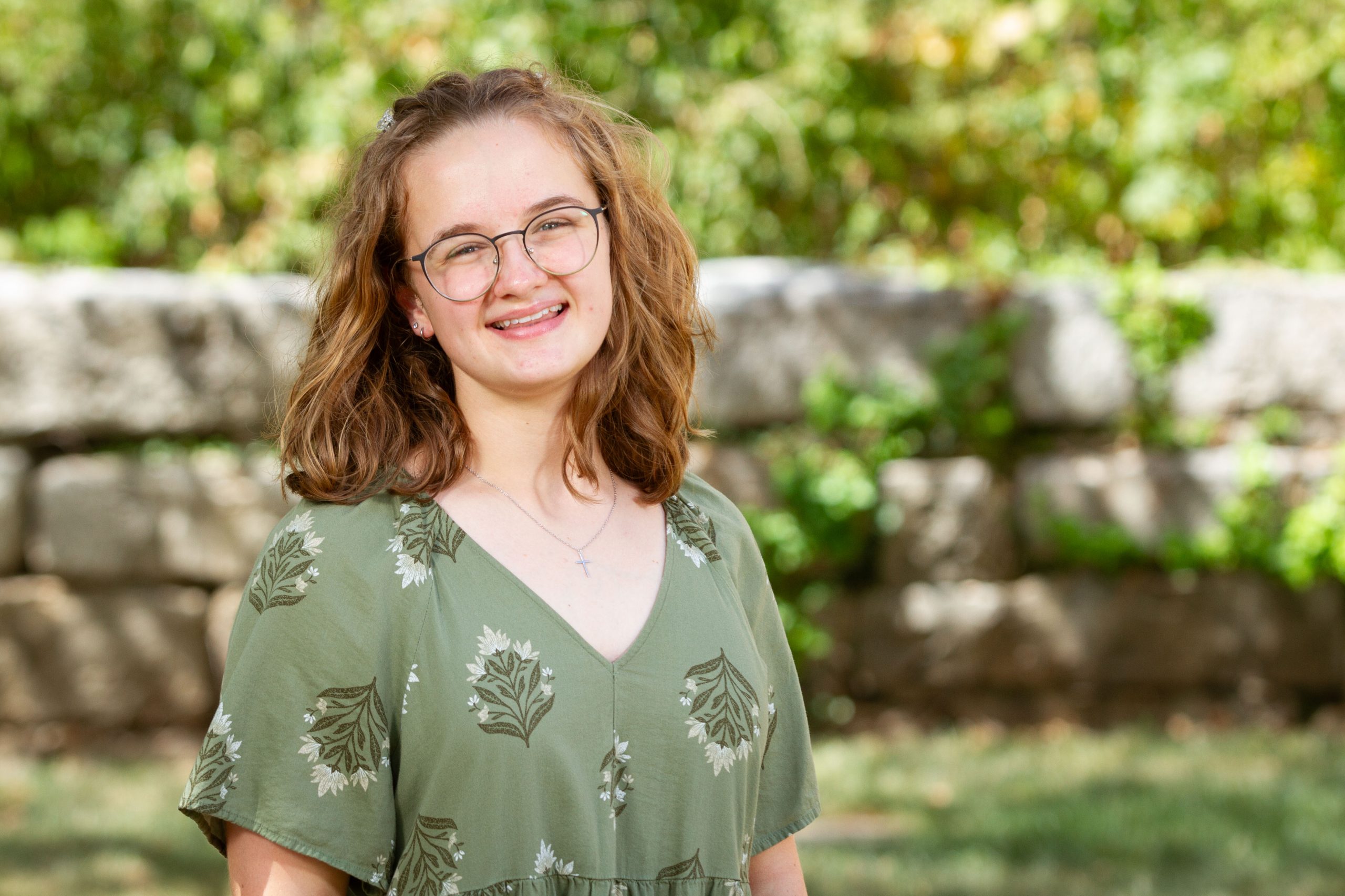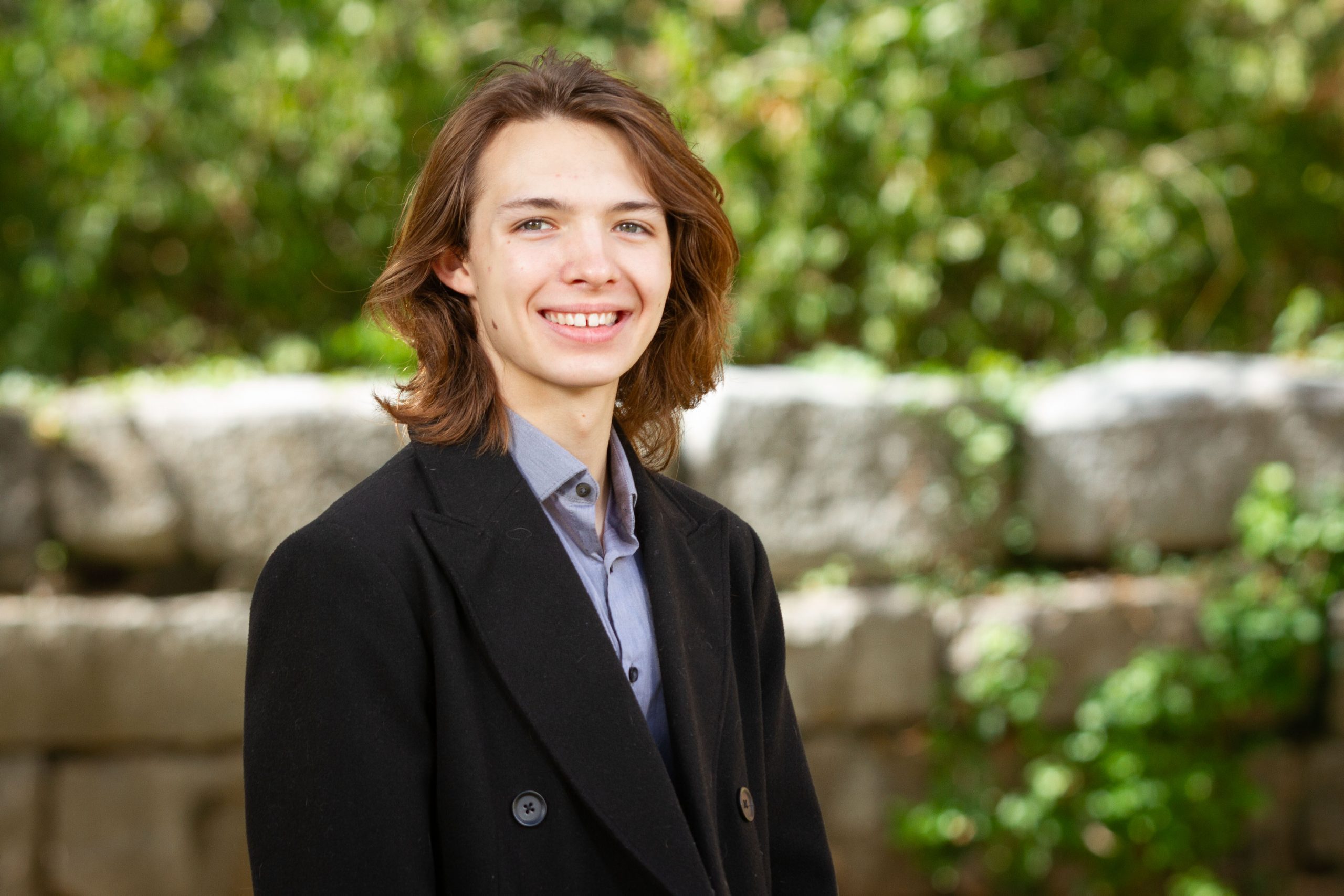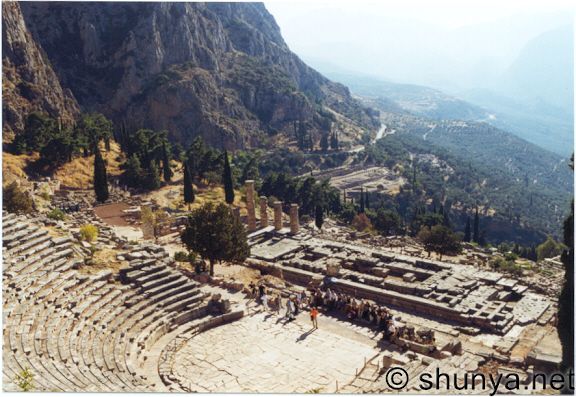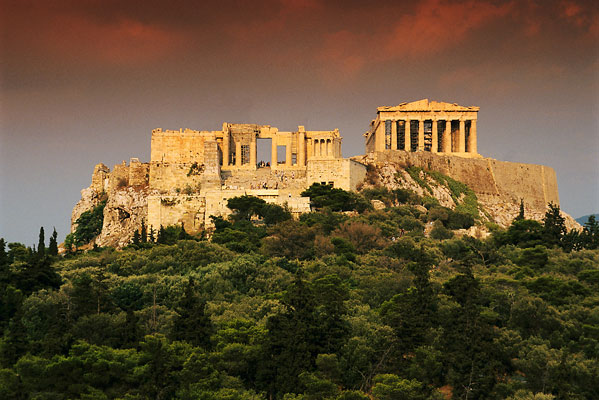[Greece10] Photo Album: Athens, Part 1
January 5, 2010 | International, News, Photos, Student Life | No Comments

March 4, 2025

February 14, 2025

January 16, 2025
January 5, 2010 | International, News, Photos, Student Life | No Comments
August 18, 2009 | Academics, International, News, Student Life | No Comments
The 2009-10 school year isn’t even under way and yet we’re excited to announce several of the cities and sites Gatton Academy students will visit during our January 2010 Winter Term program in Greece. From January 2-13, 2010, Gatton Academy students will explore the cities, culture, and history of Greece. Further details will be announced in the coming days, so check back soon. The Greece Experience marks the third consecutive travel/study program facilitated by the Gatton Academy. Students traveled to Spain and Portugal in 2009 and Italy in 2008.

Meteora
Meteora is an area in Thessaly (Central Greece) and Kalampaka is the city under the rock towers of Meteora. The thing that makes Meteora so special is the monasteries on the top of the rock towers. The monasteries, the amount of peaks to climb and the paths for hiking brings in Meteora the whole year many tourists.
The monasteries are built on rock pinnacles of deltaic origin, called ‘Meteora’, rising over 400m above the Thessalian plain. The pinnacles were created some 60 million years ago in the Tertiary period, emerging from the cone of a river and further transformed by earthquakes. The pillars are of brown sandstone. The Meteora Group of Monasteries comprises the following monasteries: Ascension of Jesus Christ; Transfiguration of the Saviour; Varlaam, Saint Nikolas Anapafsas; Roussanou; Holy Trinity; and Saint Stephan. These are built directly on the rock’s surface without foundations as such. Religious life, starting in the form of hermits dwellings, can be traced to around 1,000 AD. The first monastic community emerged in the 14th century, and was most successful during the 15th and 16th centuries. By the 17th century, the monastic population had dwindled to one-third of its original size. The site was bombed during World War II and many art treasures stolen. Details of the history of individual monasteries are available in the World Heritage nomination. The monasteries represent a unique example of monastic life since the 14th century. Since 1972 the monasteries have been restored and conservation work is carried out annually by specialists, including archaeologists, restorers, craftsmen and laborers. A variety of methods are used in the conservation work. The monasteries lie in an area within which different types of building work is prohibited or limited.

Vergina
A highly important ancient city, certainly to be identified with Aegae, the first ancient capital of the kingdom of Macedonia, spreads over the low hills in the northern slopes of’ the Pierian range, between the modern villages of Palatitsia and Vergina. This city was the most important urban center in the region until the 4th c. BC. Here were to be found the ancestral sanctuaries of the Macedonians, and the palaces and the tombs (with their famous treasures) of the Argead dynasty, which traced its origins to the mythical hero Heracles and gave Greek history its most captivating figure, Alexander the Great.
Archaeologists were interested in the hills around Vergina as early as the 1850s, knowing that the site of Aigai was in the vicinity and suspecting that the hills were burial mounds. Excavations began in 1861 under the French archaeologist Leon Heuzey, sponsored by the Emperor Napoleon III. Parts of the Macedonian royal palace of Palatista were discovered. In 1937, the University of Thessaloniki resumed the excavations. More ruins of the ancient palace were found, but the excavations were abandoned on the outbreak of war with Italy in 1940. After the war the excavations were resumed and during the 1950s and 1960s the rest of the royal capital was uncovered. The Greek archaeologist Andronikos became convinced that a hill called the “Great Tumulus” concealed the tombs of the Macedonian King.
Veria (BEREA)
The capital city of the prefecture amphitheatrically built at the foot of Vermion Mountain. Forests and fruit-tree plantations thrive in the rainy climate of the area and the remains of historic and prehistoric agricultural settlements are evident. it is believed was named after Feronas, a general in the army
of Alexander the Great. The city’s golden age was during the 13th century and the subsequent economic and commercial activity resulted in the significant cultural and spiritual growth of the city. Christianity has a vulnerably long history here. Saint Paul preached in Veria (Acts 17: 1-13 of the New Testament) on two occasions, and a gaudy alcove shrine at the base of Mavromikhali marks the supposed spot of his sermons. But the town is more famous for fifty or so small medieval churches, mostly sixteen to eighteen century.

Thessaloniki
Thessaloniki is undoubtedly the center not only of northern Greece but of the entire Balkans -as it has been since the time of the birth of Christ. It is an administrative and commercial center with its own distinctive intellectual and artistic personality, and it serves as a major cosmopolitan crossroads whose cultural influence is far-reaching. Thessaloniki is one of the oldest cities in Europe and it is also the second- largest city in Greece, after Athens, which is why Greeks often refer it as the country’s “co-capital”. The wealth of its surviving monuments has made it a living Byzantine art museum.

Delphi
Delphi was considered by the ancients to be the physical and spiritual center of the earth. The shrine of Apollo, set nearly 2,000 feet up on the slopes of Mount Parnassus, exerts today a potent grip on the visitor. Here was the most respected oracle of antiquity. Even the most intelligent individuals who lived during the brilliant civilization of Athens believed implicitly in the responses of the god. These were given by the inspired priestess Pythia and were interpreted, usually with an ambiguous touch, by the priests. The site is breathtaking and the view from the top, down to the blue waters of the Gulf of Corinth, is spectacular. The drive will take guests by the sacred Castalian spring and close to the ancient site of Apollo’s sanctuary. Guests will then walk the sacred way, visiting the treasuries, the place of offerings, the Grand Temple of Apollo and the theater, with its splendid acoustics.
The Museum is housing many treasures. Omphalos, which marked the center of the world and the Charioteer, one of the finest pieces surviving from the fifth century B.C. are among the many wonders housed in the museum.

Ancient Olympia
Olympia Greece was the site of the ancient Olympic Games, which were celebrated every four years by the Greeks. Olympia was situated in a valley in Elis, in western Peloponnisos (Peloponnesus), through which runs the Alpheus River. It was not a town, but only a sanctuary with buildings associated with games and the worship of the gods. Olympia was a national shrine of the Greeks and contained many treasures of Greek art, such as temples, monuments, altars, theaters, statues, and votive offerings of brass and marble. The Altis, or sacred precinct, enclosed a level space about 200 m (about 660 ft) long by nearly 177 m (nearly 580 ft) broad. In this were the chief centers of religious worship, the votive buildings, and buildings associated with the administration of the games. The most celebrated temple was the Temple of Zeus, dedicated to the father of the gods. In this temple was a statue of Zeus made of ivory and gold, the masterpiece of the Athenian sculptor Phidias. Next to the Temple of Zeus ranked the Heraeum, dedicated to Hera, the wife of Zeus. In this temple, probably the oldest Doric building known, stood the table on which were placed the garlands prepared for the victors in the games. The votive buildings included a row of 12 treasure houses and the Philippeum, a circular Ionic building dedicated by Philip II, king of Macedonia, to himself. Outside the Altis, to the east, were the Stadium and the Hippodrome, where the contests took place; on the west were the Palaestra, or wrestling school, and the Gymnasium, where all competitors were obliged to train for at least one month.The Archaeological Museum of Olympia, one of the most important museums in Greece, presents the long history of the most celebrated sanctuary of antiquity, the sanctuary of Zeus, father of both gods and men, where the Olympic games were born. The museum’s permanent exhibition contains finds from the excavations in the sacred precinct of the Altis dating from prehistoric times to the Early Christian period.
Corinth Canal
In the connection of continental Greece and Peloponnese, the Isthmus of Corinth cut by the famous canal of the same name, separates the Gulf Saronique of the Gulf of Corinth. 6343 meters long, 24.60 meters wide, the canal possesses walls achieving 79.50 meters in height the highest point.
Epidavrus Theater
The theater was constructed in the late 4th century BC. Originally it had 34 rows and was used for dramatic performances. The Romans added another 21 rows. Even in ancient times, the theater was considered to have great acoustics. The actors can be perfectly heard by all 15,000 spectators without the sound having to be amplified. The limestone rows filter the low-frequency sounds –such as the murmur of the crowd – but amplify the sounds from the stage. It still is one of the most beautiful open-air theaters. The view behind the scene was and still is an integrated part of the theater. The theater was discovered in 1970 and the excavation began in 1972.

Mycenae
High above the modern town of Mycenae are the ruins of an ancient city. The ruins of Ancient Mycenae date back to the second millennium B.C. Though most of the original city state has been destroyed over time, parts of the Acropolis that overlooked a fertile plains still remain. The Acropolis sits atop an impressive mountain and is flanked on either side by taller mountains forming a very formidable fortification for the site, as well as a very scenic view . The Lions Gate is the main entrance into the city. The lions, with their front paws on an alter of some sort was suppose to represent the mycenaean’s power. The entrance to the Treasury of Atreus at Mycenae is actually a circular tomb or tholos.

Athens (City Tour & the Acropolis)
Tour starts with a sightseeing of the main points of interest in Athens, both ancient and modern, of Athens. Guests have the opportunity of viewing from inside the bus Constitution square, the former Royal Palace, where the Evzones, members of the National Guard, keep watch in their traditional costume over the Tomb of the Unknown Soldier. Guests will have a quick stop at the Panathenaeum Stadium holding 70,000 spectators was built of Pentelic marble in 1895 for the first modern Olympic Games. Will then pass by the National Gardens and then along University Street with its neoclassical buildings, the Academy, the University and the Library, to Omonia Square, the centre of the modern city.
Upon completion of the city tour, guests will continue with the site of the Acropolis. On the natural fortress of the Acropolis, reinforced by the hand of man, stand the Propylaea, the temple of the Winged Victory, Erechtheion with the Porch of the Caryatids and, towering over all, and the majestic Parthenon. A winding path leads to the treasure of antiquity. Visible are the relics of the civilization of which we are the proud inheritors. From the top guests can see to the North Plaka quarters and the ancient Agora; to the East, Mount Lycabettus; to the South, the theater of Dionysus. This is where the tragedies of Aeschylus, Sophocles and Euripides were performed. Here also stands the Odeon of Herodes Atticus, which is used today in the Summer Festival.
Athens (The National Archaeological Museum) –
The National Archaeological Museum is the largest museum in Greece and one of the world’s great museums. Although its original purpose was to secure all the finds from the nineteenth century excavations in and around Athens, it gradually became the central National Archaeological Museum and was enriched with finds from all over Greece. Its abundant collections, with more than 20,000 exhibits, provide a panorama of Greek civilization from the beginnings of Prehistory to Late Antiquity. The museum is housed in an imposing neoclassical building of the end of the nineteenth century, which was designed by L. Lange and remodeled by Ernst Ziller. The vast exhibition space – numerous galleries on each floor accounting for a total of 8,000 square metres – house five large permanent collections: The Prehistoric Collection, which includes works of the great civilizations that developed in the Aegean from the sixth millennium BC to 1050 BC (Neolithic, Cycladic, Mycenaean), and finds from the prehistoric settlement at Thera. The Sculptures Collection, which shows the development of ancient Greek sculpture from the seventh to the fifth centuries BC with unique masterpieces. The Vase and Minor Objects Collection, which contains representative works of ancient Greek pottery from the eleventh century BC to the Roman period and includes the Stathatos Collection, a corpus of minor objects of all periods. The Metallurgy Collection, with many fundamental statues, figurines and minor objects. And, finally, the only Egyptian and Near Eastern Antiquities Collection in Greece, with works dating from the pre-dynastic period (5000 BC) to the Roman conquest.

Athens (The New Acropolis Museum)
History – General Information
The New Acropolis Museum is a purpose built museum by architect Bernard Tschumi to house the archaeological findings related to the Acropolis Hill in Athens. It is located at the foot of the Acropolis. The construction of the Museum started in November 2004. As construction work neared completion, an operation to move the historic artifacts for a 400 meters distance from the Acropolis rock to the new museum started on October 14, 2007, involving three giant cranes. The movement of the artifacts to from the top of the Hill was called the Transfer of The Century. The Museum will exhibit approx. 4,000 artifacts. The overall budget of the Museum’s construction was 130 million of Euros.
The Concept
The design is about the clarity of an exhibition route expressed through three materials – marble, concrete, and glass. The museum, with its exceptional and significant collection of classical Greek sculpture, will be arguably one of the most advanced in the world.
Blue Sky: A Concept of Light
More than in any other museum, the New Acropolis Museum makes careful use of natural light.
People in Motion: A Concept of Circulation
The visitor’s route through the museum forms a clear three-dimensional loop. Movement in and through time, is an important aspect of this museum in particular. With more than 10,000 visitors daily, the path through the museum artifacts is designed to be of the utmost simplicity.
A Base, A Middle, and A Top
The base of the museum design ‘hovers’ over the existing archaeological excavations on pilotis. This level contains the entrance lobby as well as temporary exhibition spaces, retail space, and all support facilities. The middle is a large, double-height, trapezoidal hall that accommodates all galleries from the Archaic period to the Roman Empire. A mezzanine level includes a bar and restaurant with views toward the Acropolis, and a multimedia auditorium. The top comprises the rectangular Parthenon Gallery arranged around an indoor court.
August 13, 2009 | Academics, International, News, Student Success | No Comments
 In today’s competitive global economy, U.S. undergraduate and graduate students are under increasing pressure to gain skills that set them apart from the rest of the pack upon graduation.
In today’s competitive global economy, U.S. undergraduate and graduate students are under increasing pressure to gain skills that set them apart from the rest of the pack upon graduation.
The Language Flagship, an innovative and relatively new initiative established by the National Security Education Program, has scholarship and fellowship awards available to students with the motivation and determination to successfully complete an advanced language immersion and cultural studies program.
Western Kentucky University was selected earlier this year as of eight funded programs in the United States to receive the honor. Other universities participating in the program include: Indiana University, Ohio State, Brigham Young University, Arizona State University, University of Rhode Island, University of Oregon, and the University of Mississippi.
Additionally, six Gatton Academy students have been selected to participate in the program’s first cohort: Jared Mink, a second-year student from Laurel County; Megan Stulz, a second-year student from Kenton County; Amy Cordero, a second-year student from Pike County; Jason Ludden, a second-year student from Adair County; Sarah Schrader, a first-year student from Warren County; and Ben Venable, a first-year student from Oldham County.
By enrolling students from across all majors and disciplines—including the sciences, economics, business, and literature—Flagship programs mainstream language study into a student’s curriculum, ensuring that they will be capable of functioning in their profession in the target language. A U.S. workforce with language proficiency and more sophisticated cultural understanding will create goodwill leading to greater international cooperation and collaboration.
According to Michael Nugent, director of the initiative based in Arlington, VA, “Graduates of The Language Flagship already have started taking their place among the next generation of global professionals through superior proficiency in languages critical to U.S. competitiveness and national security.” In fact, alumni of the program now work in key leadership and diplomacy positions in the government, business, and civic sectors.
For many careers pursued by top college graduates today, it’s not enough to study political science coupled with two years of language instruction that may not have direct relevance to the student’s major. Today’s professionals need to be able to function at a high level in their chosen fields as well as in their language of study. To meet this need, Flagship programs include intensive language training with long-term overseas study in a non-language subject.
According to WKU’s Office of Scholar Development, these programs are rigorous but rewarding and come with highly personalized advising and lucrative scholarships. Moreover, participation in the program can increase students’ competitiveness for outstanding jobs in both government and industry.
All of the Flagship programs include two components: a domestic component at one of the U.S. Flagship institutions, and an intensive study abroad component at the Overseas Flagship Centers in China. Both components are mandatory and essential to student success.
August 12, 2009 | 5Q, International, News | No Comments
 You know the drill as our “Five Questions” series keeps rolling. In this visit, we chat with Whitney Antle, a Class of 2010 student from Hardin County. Like several Academy students this summer, Whitney spent some time abroad. Though the Gatton Academy’s programmatic emphasis is on math and science, we strongly support the development of students’ passions in language, the arts, and culture. There are few better ways to accomplish this development than study abroad.
You know the drill as our “Five Questions” series keeps rolling. In this visit, we chat with Whitney Antle, a Class of 2010 student from Hardin County. Like several Academy students this summer, Whitney spent some time abroad. Though the Gatton Academy’s programmatic emphasis is on math and science, we strongly support the development of students’ passions in language, the arts, and culture. There are few better ways to accomplish this development than study abroad.
1. Tell us a little about the project or program in which you participated.
From mid-June to mid-July, I studied abroad through CCIS in Buenos Aires, Argentina. I lived with a host family that did not speak any English. I attended La Universidad de Belgrano, where I studied in an intensive language program for five hours every day. During my spare time, I explored the city, made new friends, and practiced speaking with my host family. I was able to live the life of los porteños, the people of Buenos Aires, whose language and culture are very different from my own.
2. What is the part of the summer experience did you enjoy the most?
In all honesty, I loved every bit of it! But, I would say the best part was learning to speak Spanish with greater fluency. I was able to practice not only in my “No Inglés” Spanish class, but also just by talking to my friends and host family. I loved sitting down with Cheche, my host abuelo, and listen to him talk about his family’s history. The most rewarding thing was being able to walk down the street or ride on the Subte and understand the people around me. (Tango class was pretty great, too!)
3. How is this different from the way you think most high school students spend their summers?
During my time abroad, I lived with a family I didn’t know, in a country whose language I was still trying to learn. Unlike most high school students abroad, I was not on vacation or on a school trip; I went to school every day, and I didn’t know anyone. It was truly one of the most challenging things I have ever done because I was totally responsible for myself. The degree of independence was so much greater than any I have ever had before. It was difficult at times, but so worth it simply because of the confidence I have gained.
4. How does this research experience or internship fit into your educational and professional goals?
Even though my class was not directly involved with math and science, I can use what I have learned in almost any profession. We have to be able to communicate in anything we do. Language skills are becoming more important every day. Now I can learn from people that I otherwise would not be able to understand, and they can understand me, too.
5. What are you looking forward to the most about your second year at the Academy?
I am looking forward to spending time with my friends and getting to know the new juniors. I also can’t wait to start my new classes!